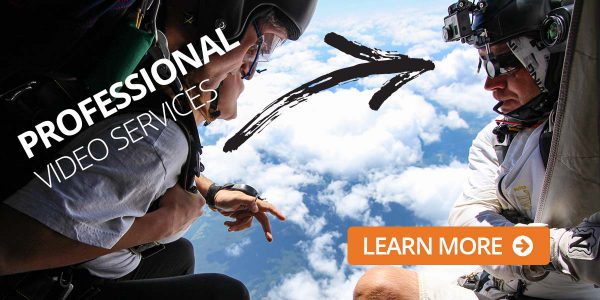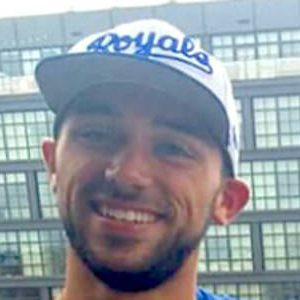The Gift of Flight
Thursday, July 31, 2014
- Whitney Payne
- 7/31/14
- 0
- Misc Skydiving News, Skydive Orange Review, Skydiving News, Skydiving School, Tandem Skydive
Skydive Orange, Ned Wulin & The Gift of Flight
An amazing video about our beloved, Mr. Ned Wulin and Skydive Orange by The Washington Post. Ned Wulin, a skydiving instructor in Orange, Va., was paralyzed from the waist down in a skydiving accident in 1996. He continues to teach students to skydive from his wheelchair.
At 14,000 feet, the air is crisp and gusting into Chuck Marrone’s face as he leans out of the turbo-prop plane and prepares to jump. He steadies himself on the door frame and lets out a breath. Below him, the rural airstrip outside of Orange, Va., unfurls like an ashen ribbon in the June afternoon sun. The view is serene, yet Marrone’s pulse is fluttering. Sweat glistens his brow. Marrone inches toward the edge and glances down. On the ground sitting in his black wheelchair is Ned Wulin, the instructor responsible for Marrone’s success — and survival. After completing more than 3,000 jumps, Wulin knows better than most the joys and perils that lurk beyond the aircraft door. “I have a better respect for what can happen,” Wulin says later. Up in the plane, Marrone is ready, coiled on the precipice where the metal cabin floor meets the sky, buoyed by a wind-whipped fear of what awaits: a mile and a half of free fall. He rocks forward. “Ready!” Marrone yells above the blustery roar. He tilts back. “Set.” And then he’s gone. At the last instant, as he drops into the void, he closes his eyes.
For more than 30 years, thrill-seekers have trekked to the Orange County Airport to jump out of airplanes. In the early 1980s, Skydive Orange was little more than a merry band of parachuting bohemians who ran their business out of a van and jumped from a smoke-belching Cessna. “Back then we were a drinking club with a skydiving problem,” said Wulin, 53. “I’ve seen things evolve since the hippie-dippie thing in the old days.” Today the silver-haired Wulin, who now wears transition lenses and Velcro sneakers, oversees operations out of a $750,000 hangar, where state-of-the-art parachute rigs hang neatly on the walls. Parachutists perform more than 20,000 jumps at Skydive Orange every year. Despite the upgrades, the place retains its free-spirited charm. Many staffers reside in thin-walled trailers parked wagon-circle fashion just beyond the airfield. The camp boasts an inflatable kiddie pool, a stone fire pit and a Jolly Roger pirate flag.
Dozens of skydivers from the Washington area make the 80-mile drive to Orange. Monday through Friday they are Securities and Exchange Commission lawyers, Treasury analysts and NASA rocket engineers. On weekends, they seek the rush that comes during the 50 seconds they plunge toward the earth.
“It’s the ultimate in personal responsibility,” said Lucie Low, a neuroscientist at the National Institutes of Health who has completed more than 180 jumps. “You are choosing to step out of an airplane, and it will kill you unless you sort yourself out. Every time I get out of the plane, it reminds me of what I’m capable of. If you can throw yourself out of an airplane, you can do anything.”
Wulin, who began skydiving in 1978, became enraptured by the blissful act of soaring through the air. “It’s like being a big kid jumping into a big pile of leaves over and over and over again,” Wulin said.
He accumulated 3,000 jumps before turning his focus to instructing jittery first-timers. They all sign waivers: Under the bold “WARNING,” the last page reads: “Skydiving, parachuting and all its related activities are dangerous and there are literally thousands of various risks involved in your participation.”
At Skydive Orange, no one is more intimately familiar with such risks than Wulin. His presence in the hangar, where he rolls around in his wheelchair, is a reminder of the sport’s inherent hazards.
On Nov. 16, 1996,
Wulin was one of 10 passengers aboard a Beechcraft King Air taking off for a routine jump at Orange.
He was going up for a tandem skydive with a novice buckled to his chest. As the plane headed down the runway, Wulin noticed the pilot frantically adjusting the controls. The plane caromed off the tarmac and cartwheeled into a cattle pasture. After rescuers helped the passengers out of the wreckage, the plane burst into flames.
No one died, and most passengers suffered only minor injuries. Wulin, however, was paralyzed from the waist down. He said he felt no pain but knew immediately when the plane came to rest that he had broken his spine.
Lying in the grass, he felt the intense heat of the burning jet fuel as he waited for paramedics. “I remember thinking to myself, ‘Oh, well, it could be much worse,’ ” Wulin said.
Seventeen months later, Wulin jumped again, the first of 10 skydives he made after his paralysis. But it has been years since his last jump; his body is frail from years of sitting in his chair.
These days Wulin skydives vicariously through his students as an accelerated-free-fall instructor. He has taught thousands how to properly leap from the plane, position themselves during free fall and fly their parachutes to a safe landing.
Sarah Nuckols, 48, recalled feeling startled when she saw Wulin in his wheelchair on the morning of her first-ever skydive.
“I’m signing all these waivers,” said Nuckols, and “here’s this guy who got injured.”
But Nuckols completed that jump and 700 others since. She credits Wulin. “He’s so calm and so comforting,” said Nuckols, of Glen Allen, Va. “He made you feel like ‘Yeah, everything is going to be okay.’ ”
A former accountant, Nuckols took up skydiving as a weekend diversion and quickly became consumed by the sport’s allure.
“Looking out at the clouds and the ground in the open door and having the air blowing over you — it’s therapy,” Nuckols said. “When skydiving, it’s the only thing you can do. You’re not thinking about other stuff.”
But she acknowledges it’s a dangerous drug. In her decade of skydiving, she has witnessed fatalities at drop zones around the country. She has heard the loud thump of two jumpers colliding in midair, seen the bodies crumpled on the ground under a dust cloud.
She was at Orange in 2006 when Michael Ramon corkscrewed his parachute uncontrollably toward the earth. He is among five reported deaths at Orange since 1993.
Skydiving deaths are rare. In 2013, 24 people died making jumps; a majority occurred after the canopy had fully deployed. On average, more people are killed by lightning, 33 a year, according to National Weather Service data.
In 2008, two skydiving deaths at Orange in a two-month span led Wulin to revamp safety procedures and instructor training.
Steve Hetrick, a skydiving instructor, says that for Wulin, keeping students safe is paramount. During the 1996 plane crash, Wulin wrapped himself around the student in front of him, absorbing the impact, Hetrick said.
“He probably would not have been hurt as badly as he could have been, but he protected his tandem student,” Hetrick said. “The student walked away without a scratch.”
Wulin never walked again.
Wulin grew up
in Fishersville, Va., where his father ran a plant nursery stocked with rhododendrons and azaleas. During the winters, Hickory Hill Pinessold white pines, Norway spruces and Canaan firs.
Seeking to take over the family business, Wulin majored in horticulture at Virginia Tech in the late 1970s. Then one day he saw a notice about skydiving near Roanoke.
In his first jumps, Wulin made a terrible student, flailing the air during free fall. But he relished the challenge and craved the adrenaline blast. After graduating in 1981, Wulin pursued his instructor’s license at Orange.
One day in June, Wulin spoke to students as Orange’s deHavilland Twin Otter howled outside of the hangar. The warm breeze smelled of cut grass and nostril-tingling jet fuel.
“I definitely was a little intimidated walking up to the door — there was a lot more wind than I anticipated,” Marrone said. “As I was just departing I thought, Holy hell, I can’t believe I’m doing this.”
Marrone kept his composure and performed well on his first jump. In a video capturing his free fall, his face is beaming with a smile. Back in the hangar later, Marrone and Wulin review the footage together. Watching his student’s successful skydive, Wulin smiled, too.
“For all of you who haven’t skydived before, it’s kind of hard to describe,” Wulin told Marrone and three other students. “It’s something you’ve got to experience. You’re going to feel like a bug caught in a vacuum cleaner hose.”
Wulin said parachute malfunctions are rare but drilled the students on how to locate the toggle of their reserve canopy. He used a bit of black humor to make his point, noting that he would rather the students perfect the emergency procedures and not “make a big crimson crater.”
In free fall, Wulin said, the students may have to think quickly to fix a problem when dropping 1,000 feet every five seconds.
By late afternoon, he deemed the students ready. It was Marrone’s turn. A former Navy helicopter pilot, Marrone, 37, served tours in Afghanistan and Iraq, flying combat search-and-rescue missions. Although he flew Navy SEALs on parachute training runs, he never jumped himself.
Written by T. Rees Shapiro. Shapiro is a Washington Post staff writer.
Tags: Drop Zone, Ned Wulin The gift of Flight, Skydive Orange in the news, skydive orange va, Tandem Skydiving
The largest tandem skydiving center near Northern Virginia, Washington D.C. and Maryland.
Copyright © 2025, Skydive Orange, All Rights Reserved.
DropZone Web Design & Marketing by Beyond Marketing, LLC


